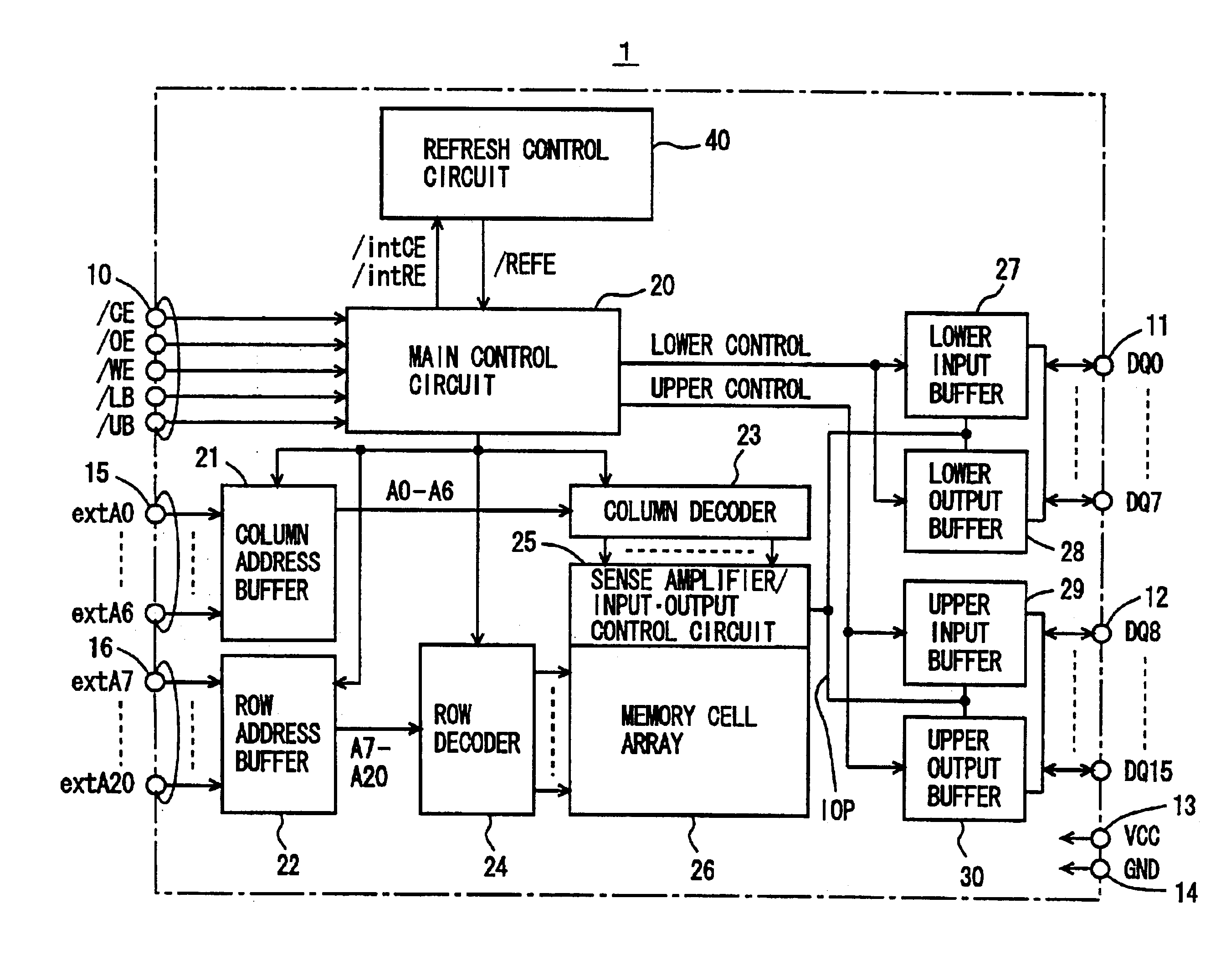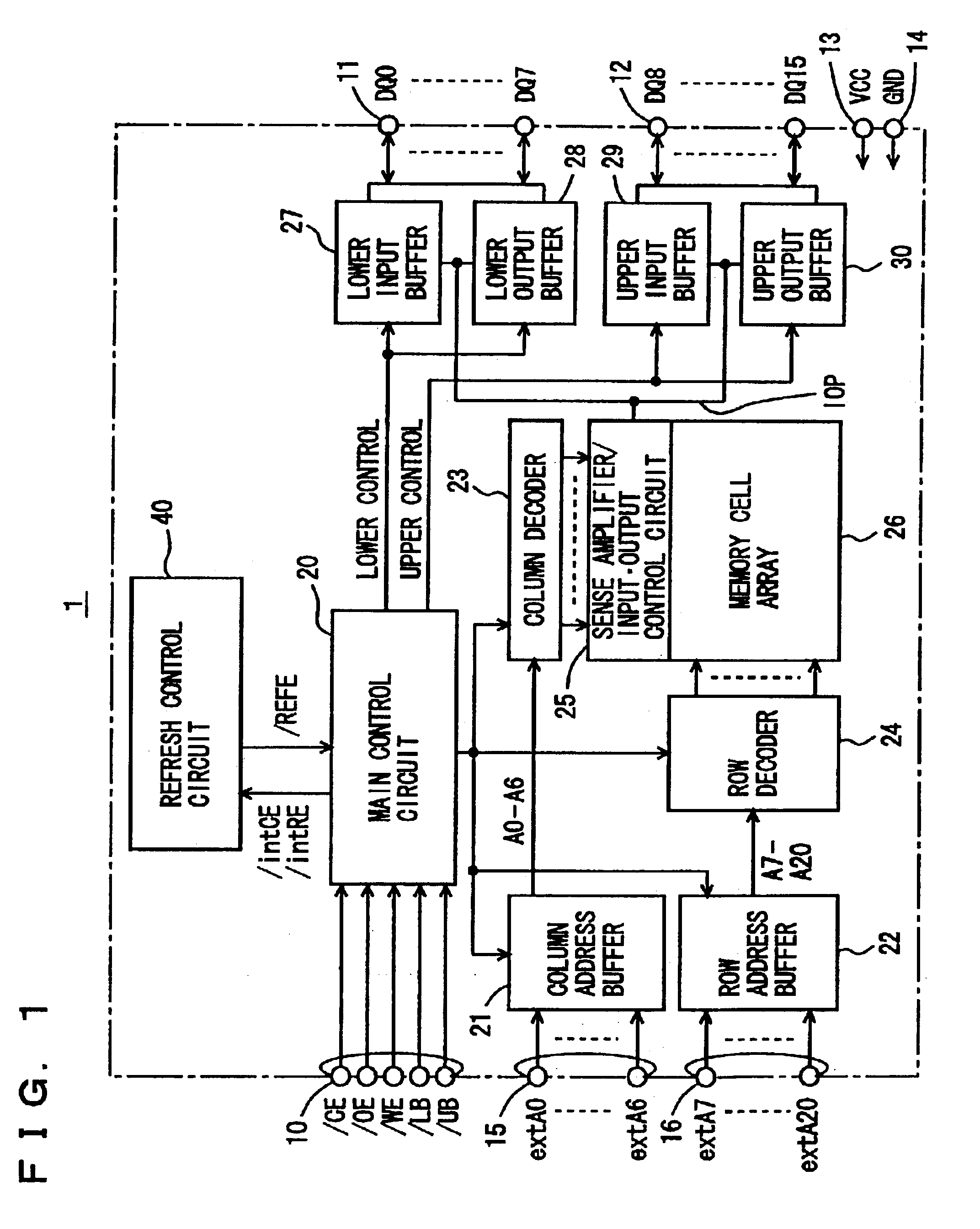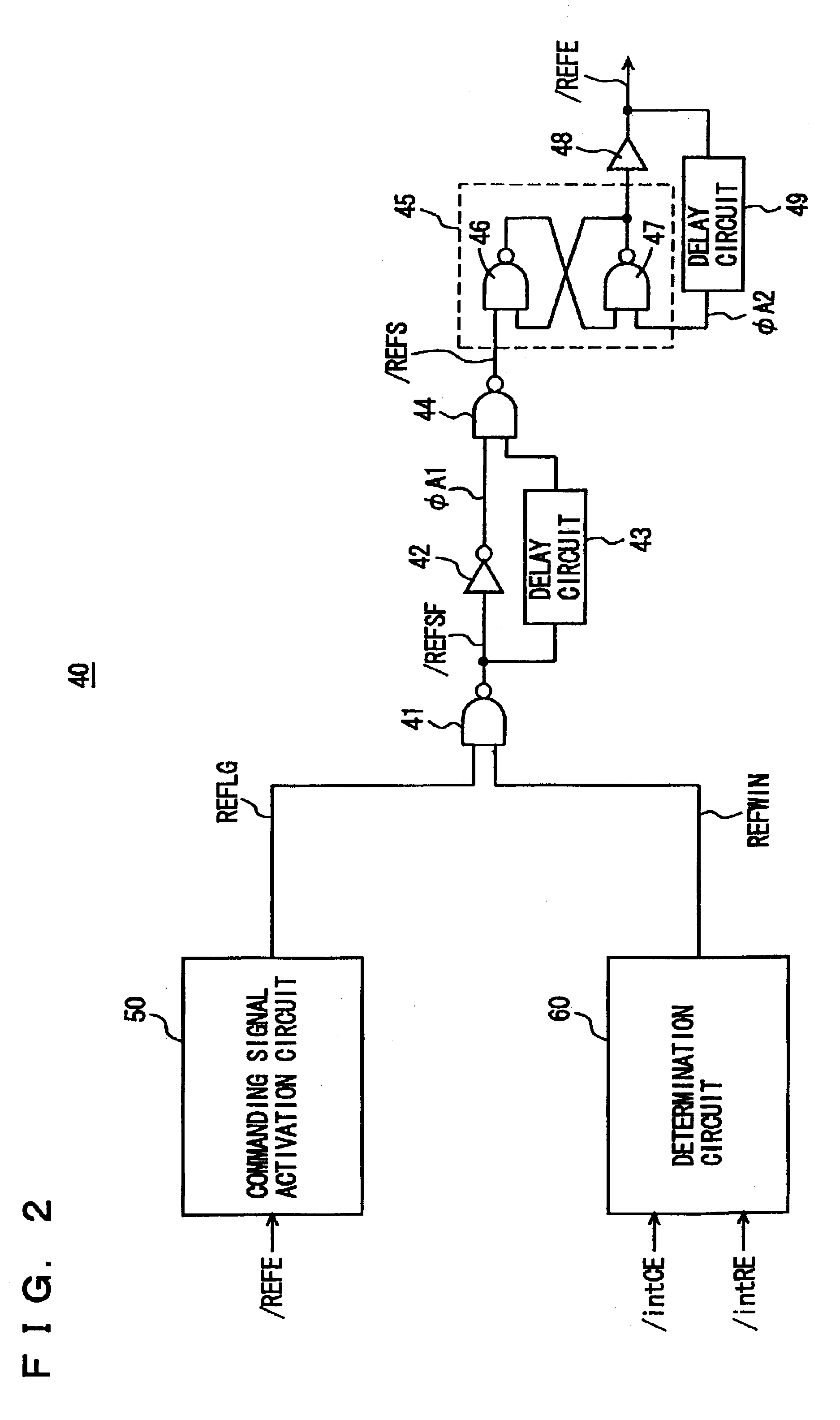Fully-hidden refresh dynamic random access memory
a dynamic random access memory and fully hidden technology, applied in the field of fully hidden refresh dram (dynamic), can solve the problems of data destruction, sizing of the entire system, and inability to ensure the correct data access operation
- Summary
- Abstract
- Description
- Claims
- Application Information
AI Technical Summary
Benefits of technology
Problems solved by technology
Method used
Image
Examples
sixth embodiment
[0053]FIG. 30 is a timing chart representing an operation of the semiconductor memory device according to the present invention;
seventh embodiment
[0054]FIG. 31 is a diagram schematically showing a configuration of a main part of a semiconductor memory device according to the present invention;
[0055]FIG. 32 is a timing chart representing an operation of the circuitry shown in FIG. 31;
eighth embodiment
[0056]FIG. 33 is a diagram schematically showing a configuration of a main part of a semiconductor memory device according to the present invention;
[0057]FIG. 34 is a timing chart representing an operation of the determination circuit shown in FIG. 33;
[0058]FIG. 35 is a timing chart representing an operation of the circuitry shown in FIG. 34; and
[0059]FIG. 36 is a timing chart representing an operation in a short cycle of the semiconductor memory device shown in FIG. 33.
DESCRIPTION OF THE PREFERRED EMBODIMENTS
PUM
 Login to View More
Login to View More Abstract
Description
Claims
Application Information
 Login to View More
Login to View More - R&D
- Intellectual Property
- Life Sciences
- Materials
- Tech Scout
- Unparalleled Data Quality
- Higher Quality Content
- 60% Fewer Hallucinations
Browse by: Latest US Patents, China's latest patents, Technical Efficacy Thesaurus, Application Domain, Technology Topic, Popular Technical Reports.
© 2025 PatSnap. All rights reserved.Legal|Privacy policy|Modern Slavery Act Transparency Statement|Sitemap|About US| Contact US: help@patsnap.com



